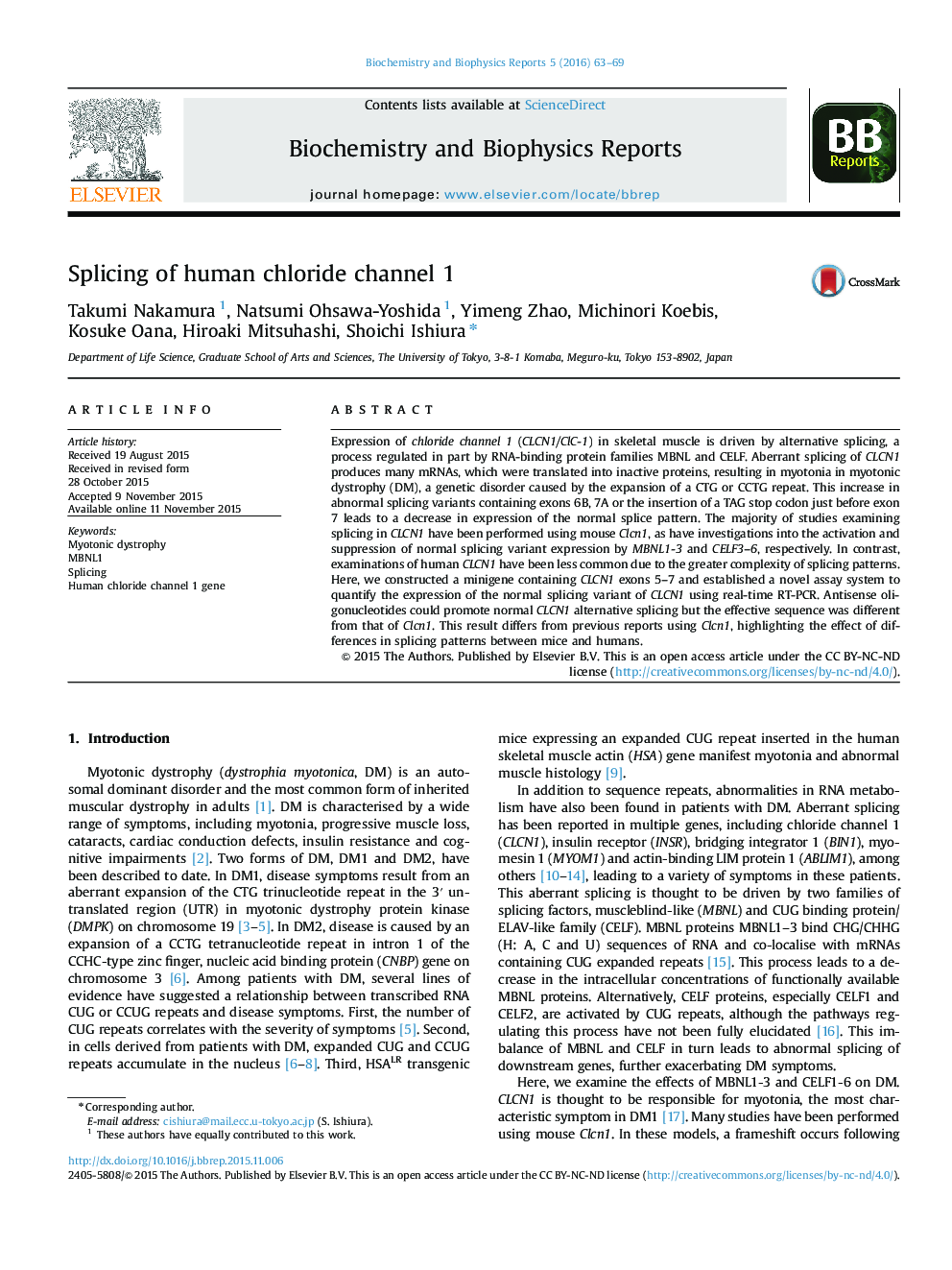| کد مقاله | کد نشریه | سال انتشار | مقاله انگلیسی | نسخه تمام متن |
|---|---|---|---|---|
| 1941703 | 1536903 | 2016 | 7 صفحه PDF | دانلود رایگان |
• Splicing of of human chloride channel 1 (CLCN1) was studied.
• Abnormal splicing variants were observed.
• Antisense oligonucleotides could promote normal CLCN1 splicing.
Expression of chloride channel 1 (CLCN1/ClC-1) in skeletal muscle is driven by alternative splicing, a process regulated in part by RNA-binding protein families MBNL and CELF. Aberrant splicing of CLCN1 produces many mRNAs, which were translated into inactive proteins, resulting in myotonia in myotonic dystrophy (DM), a genetic disorder caused by the expansion of a CTG or CCTG repeat. This increase in abnormal splicing variants containing exons 6B, 7A or the insertion of a TAG stop codon just before exon 7 leads to a decrease in expression of the normal splice pattern. The majority of studies examining splicing in CLCN1 have been performed using mouse Clcn1, as have investigations into the activation and suppression of normal splicing variant expression by MBNL1-3 and CELF3–6, respectively. In contrast, examinations of human CLCN1 have been less common due to the greater complexity of splicing patterns. Here, we constructed a minigene containing CLCN1 exons 5–7 and established a novel assay system to quantify the expression of the normal splicing variant of CLCN1 using real-time RT-PCR. Antisense oligonucleotides could promote normal CLCN1 alternative splicing but the effective sequence was different from that of Clcn1. This result differs from previous reports using Clcn1, highlighting the effect of differences in splicing patterns between mice and humans.
Journal: Biochemistry and Biophysics Reports - Volume 5, March 2016, Pages 63–69
